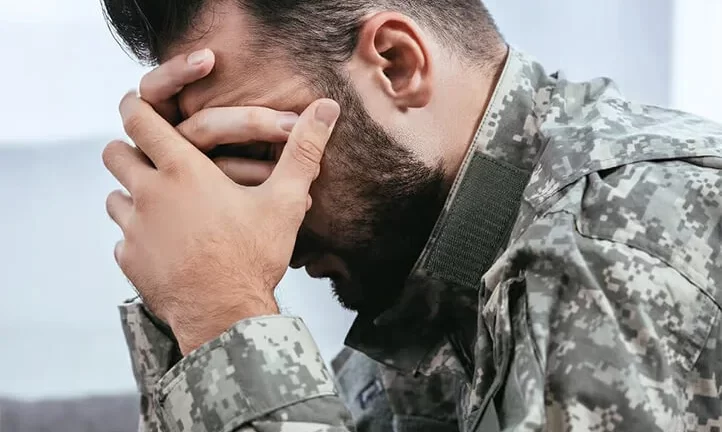Post-Traumatic Stress Disorder (PTSD) is a mental disorder that may occur after a person experiences or witnesses traumatic events, such as physical or sexual violence, disasters, military conflicts, etc. PTSD is characterized by a prolonged period of intense stress or anxiety following a traumatic experience.
Characteristics of PTSD include:
- Intrusive memories. Recurrent, involuntary memories of the traumatic event.
- Negative thinking and mood. Increased pessimism, feelings of guilt, or self-worthlessness.
- Avoidance. Attempts to avoid situations, places, or people that remind one of the trauma.
- High level of anxiety. Heightened stress response, sleep disturbances, constant vigilance.
Treatment may include psychotherapy, medication, or a combination of both, aimed at reducing symptoms and improving the individual’s quality of life.
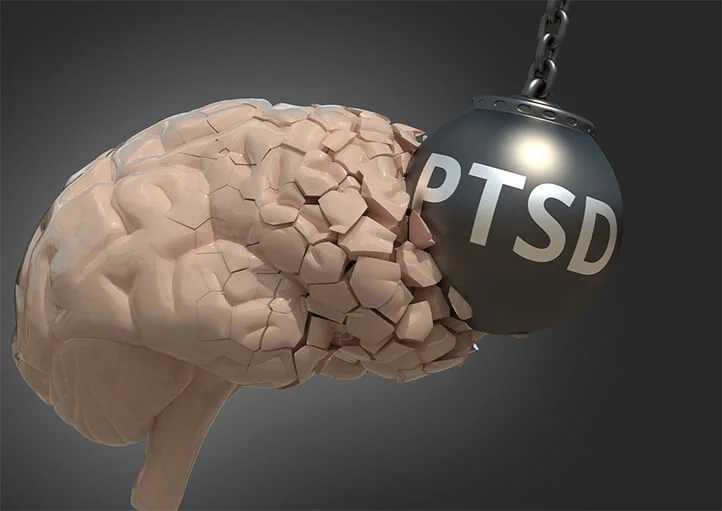
Historical Context and Recognition by the Medical Community
Post-Traumatic Stress Disorder (PTSD) is a long-standing phenomenon, but it was only formally recognized by the medical community in the second half of the 20th century. It has been known by various names throughout history, from “combat shock” to “shell shock.”
The earliest descriptions of conditions similar to PTSD can be found in ancient Greek chronicles, where warriors were mentioned as having suffered deep psychological trauma after participating in battles. This phenomenon was also seen in 19th and early 20th-century military conflicts, where it was referred to as “trench shock.”
However, the modern recognition of PTSD as a medical diagnosis occurred only in 1980 when it was included in the third edition of the Diagnostic and Statistical Manual of Mental Disorders (DSM-III) by the American Psychiatric Association. This inclusion resulted from numerous studies and discoveries regarding the impact of traumatic events on mental health, many of which were conducted after the Vietnam War.
Since then, research in this area has continued to expand, and today PTSD is recognized as a serious mental disorder that can affect anyone who has experienced traumatic events, not just military personnel.
Statistics on the prevalence of PTSD may vary depending on the region, time period, and other factors. However, here are some general data that may be useful to you:
- Global prevalence. Approximately 3.5% of the adult population is estimated to experience PTSD in any given year.
- Gender differences. Women are at a higher risk of developing PTSD compared to men. About 10% of women and 4% of men have experienced PTSD at some point in their lives.
- Military service. Military personnel are a particularly vulnerable group with high rates of PTSD, which can reach 15-30% depending on the conflict or military actions. This is especially relevant in the context of the Russia-Ukraine war.
- Traumatic events. About 50-60% of all adults have experienced at least one traumatic event in their lives, but not all of these events resulted in PTSD.

Relevance of the Problem of Post-Traumatic Stress Disorder in the Modern World
The issue of PTSD remains very relevant in the modern world for several reasons. Let’s examine them:
- Global conflicts and wars. Unfortunately, there are still military conflicts in the world where people encounter traumatic events daily, potentially leading to PTSD.
- COVID-19 pandemic. The coronavirus pandemic has led to an increase in PTSD cases due to health threats, loss of loved ones, isolation, and economic crises.
- Natural disasters. The modern world is witnessing an increase in natural disasters, which traumatize people and make them vulnerable to developing PTSD.
- High levels of violence. It is known that domestic violence, sexual violence, and other forms of aggression are common causes of PTSD.
- Professional impact. Emergency doctors, police officers, firefighters, and other emergency service workers often face traumatic events at work, which can lead to PTSD.
- Current research and discussions. Medical associations and researchers are actively studying PTSD and looking for new ways to treat and prevent it, indicating the relevance of this issue.
- Social awareness. There is growing social awareness about PTSD, and communities are trying to provide support and resources for those experiencing this mental disorder.
In conclusion, the issue of PTSD remains highly relevant in the modern world, and its resolution requires joint efforts at all levels of society.
The Significance of PTSD for Society and Individuals
The significance of PTSD for society and individuals can be divided into different aspects—psychological, social, economic, and medical. Here are some key points to consider:
For Individuals
- Mental health. PTSD can affect an individual’s mental health, leading to anxiety, depression, and other mental issues.
- Quality of life. People suffering from PTSD may experience a decline in quality of life due to constant anxiety and inability to enjoy ordinary life moments.
- Interpersonal relationships. PTSD can complicate relationships with others, including family, friends, and colleagues.
For Society
- Social harmony. In a society where many suffer from PTSD, maintaining social harmony and agreement is difficult.
- Economic impact. PTSD can have economic consequences for society due to lost productivity and increased healthcare costs.
- Resources and support. Society is often forced to allocate significant resources to provide support and assistance to people suffering from PTSD.
- Education and prevention. Society may need to implement education and prevention programs to prevent PTSD and assist those already suffering from this mental disorder.
Together, these points demonstrate the importance of understanding PTSD as a serious problem affecting both personal and societal levels.
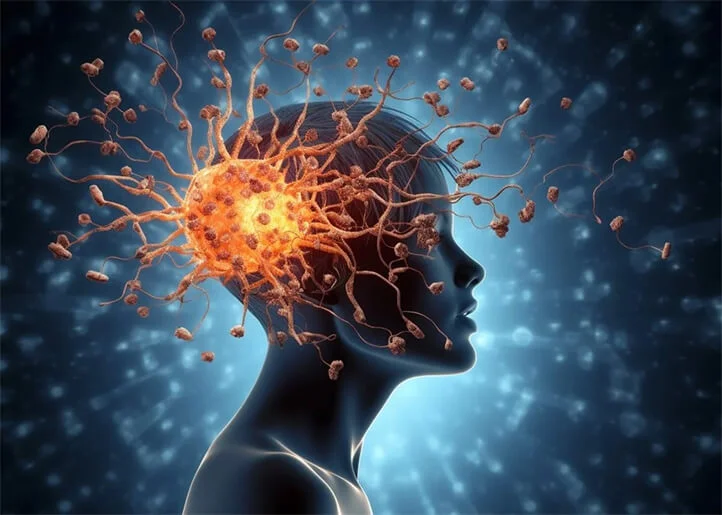
Post-Traumatic Stress Disorder: Causes
Traumatic events that can trigger PTSD vary and encompass physical, psychological, or moral injuries. Here are some examples of such events:
- Military Conflicts:
- participation in combat;
- witnessing acts of violence or death.
- Disasters:
- natural disasters (earthquakes, floods, hurricanes, etc.);
- man-made disasters (airplane crashes, explosions, etc.).
- Personal Injuries:
- sexual assault or rape;
- physical or psychological abuse;
- violence.
- Tragic Events:
- loss of loved ones due to sudden death or murder;
- severe medical diagnoses.
- Terrorist Acts:
- experiencing terrorist attacks;
- witnessing terrorist acts.
- Childhood Trauma:
- witnessing or experiencing violence in childhood;
- serious accidents in infancy.
These events often have a profound and long-lasting impact on an individual’s psyche and can lead to the development of PTSD in susceptible individuals.
Individual Risk Factors
“Individual risk factors” refer to specific aspects that may increase the likelihood of developing certain conditions or disorders, including post-traumatic stress disorder. Here are a few factors to consider:
- Genetic Predisposition:
- tendency towards anxiety or depression;
- family history of mental disorders.
- Previous Traumatic Experience:
- childhood abuse;
- past traumatic events.
- Personal Traits:
- high levels of neuroticism;
- insufficient coping skills.
- Social Factors:
- lack of social support;
- social isolation.
- Physical Health:
- chronic illnesses;
- sleep disorders.
- Brain Development:
- anatomical or functional brain characteristics.
- Chemical Factors:
- substance abuse (alcohol or drugs).
These factors can be assessed to identify individuals at higher risk of developing PTSD following a traumatic event.
Psychological and Social Factors
Psychological and social factors in the context of post-traumatic stress disorder include various aspects that influence how a person responds to traumatic events and how subsequent adaptive recovery occurs. Here are some of them:
Psychological Factors
-
- Personal Characteristics:
- temperament;
- level of emotional stability.
- Previous Mental State:
- presence of mental disorders;
- tendency towards depression or anxiety.
- Coping Mechanisms:
- self-regulation skills;
- ability to self-support.
- Trauma Response:
- degree of experiencing horror or helplessness;
- presence of dissociative reactions.
- Personal Characteristics:
Social Factors
-
- Family Environment:
- stability of family relationships;
- presence of support within the family.
- Social Support:
- availability of a social support network;
- interaction with social groups or communities.
- Socioeconomic Status:
- education;
- economic status.
- Cultural Factors:
- cultural norms and values regarding trauma response;
- community experience with traumatic events.
- Family Environment:
Biological Basis (Pathophysiology)
The pathophysiology of post-traumatic stress disorder refers to the biological mechanisms and changes in the body that occur due to the impact of a traumatic event. Below are some of them:
- Changes in Hormonal Levels:
- increased cortisol levels;
- alterations in norepinephrine levels.
- Functional and Structural Changes in the Brain:
- changes in the prefrontal cortex;
- impact on the amygdala and hippocampus.
- Changes in the Immune System:
- impaired immune reactivity;
- inflammatory processes.
- Genetic and Epigenetic Factors:
- genetic predisposition;
- epigenetic changes affecting gene activity.
- Neurochemical Changes:
- alterations in neurotransmitter levels;
- disrupted neuroplasticity.
- Psychophysiological Reactions:
- changes in cardiovascular system functioning;
- stress responses at the physiological level.
Research and Evidence
- Clinical Examinations:
- brain neuroimaging (MRI);
- neuropsychological tests.
- Laboratory Studies:
- hormonal level analysis;
- genetic and epigenetic studies.
Studying these aspects helps doctors and scientists better understand the nature of PTSD and develop more effective treatment methods and interventions.

Clinical Presentation
The classification of PTSD (Post-Traumatic Stress Disorder) symptoms often relies on diagnostic criteria used in modern medical manuals, such as the DSM-5 (Diagnostic and Statistical Manual of Mental Disorders, Fifth Edition) or ICD-10 (International Classification of Diseases, Tenth Edition). The main categories of symptoms include:
- Intrusive Memories:
- memories or intrusive thoughts about the trauma;
- nightmares;
- reliving traumatic events (flashbacks).
- Avoidant Behavior:
- avoiding places, people, or situations that remind one of the trauma;
- avoiding memories or thoughts related to the trauma.
- Negative Changes in Psycho-Emotional State and Perception of Self and Others:
- poor self-esteem or negative beliefs about oneself and others;
- persistent feelings of guilt, shame, or detachment;
- reduced ability to experience positive emotions.
- Increased Arousal and Reactivity:
- heightened tension or “fight or flight” readiness;
- sleep disturbances;
- concentration problems;
- uncontrollable stress reactions.
When considering these symptoms, it is important to remember that individual experiences can vary significantly, and not all individuals with PTSD will have all the listed symptoms. They may develop over a long period following a traumatic event and can be complex and multifaceted.
Experiencing Trauma
Experiencing trauma is a complex process that includes an individual’s response to a traumatic event or events. This process encompasses the following aspects:
- Shock and Stupor: The initial reaction to trauma may include shock, stupor, denial, or disbelief.
- Emotional Response: The emergence of intense emotions such as fear, anger, despair, or guilt.
- Physical Symptoms may include body pain, rapid heartbeat, sleep disturbances, etc.
- Changes in Behavior and Interactions: Avoidance of places, people, or situations that remind one of the trauma.
- Cognitive Changes: Including difficulties with concentration, memory impairment, or persistent intrusive thoughts about the trauma.
This process is individual and can vary from person to person, depending on the nature of the trauma, the personal characteristics of the individual, and other factors.
Avoidance and Depersonalization
“Avoidance” and “depersonalization” are two terms often used to describe symptoms or reactions to post-traumatic stress disorder (PTSD). Let’s look at each of them separately:
Avoidance
Avoidance is a coping strategy that involves trying to avoid memories, places, people, or situations associated with a traumatic event. In other words:
-
- refusing to meet;
- avoiding painful memories;
- avoiding pain;
- careful dodging;
- anxiety.
Depersonalization
Depersonalization is a psychological mechanism in which a person feels detached from their own body or consciousness, often as a reaction to stress or trauma. In other words:
-
- depersonalization;
- alienation;
- loss of connection with reality;
- perceiving oneself from an outside perspective;
- lack of emotional connection.
Both terms point to the complex processes of adaptation and recovery following a traumatic experience.
Increased Anxiety and Hyperactivity
Increased anxiety and hyperactivity can be analyzed separately or together as phenomena that often accompany each other. Here’s how they can be described:
Increased Anxiety
-
- growing uncertainty;
- heightened state of anxiety;
- intensification of tension;
- increased worry;
- high level of concern.
Hyperactivity
-
- increased restlessness;
- heightened motor activity;
- excessive energy.
These terms indicate a state of heightened emotional distress and excessive activity, which can be manifestations of post-traumatic stress disorder or reactions to certain stressful situations.
Comorbid Conditions and Disorders
When analyzing PTSD, comorbid conditions and disorders can be numerous and multifaceted. Here are some potential complications to watch out for:
- Cognitive Disorders and Memory:
- impaired concentration;
- memory problems.
- Physical Symptoms:
- chronic pain;
- sleep disorders.
- Mental Disorders:
- depression;
- anxiety;
- suicidal thoughts and behavior.
- Changes in Interpersonal Relationships:
- detachment;
- trust issues.
- Self-Esteem:
- feelings of guilt or shame;
- low self-esteem.
- Substance Abuse:
- alcohol abuse;
- drug abuse.
- Professional and Academic Problems:
- job loss;
- problems in education.
Each of these points can be explored in detail in terms of how it interacts with post-traumatic stress disorder, what mechanisms underlie these complications, and what strategies should be applied to reduce or eliminate them.
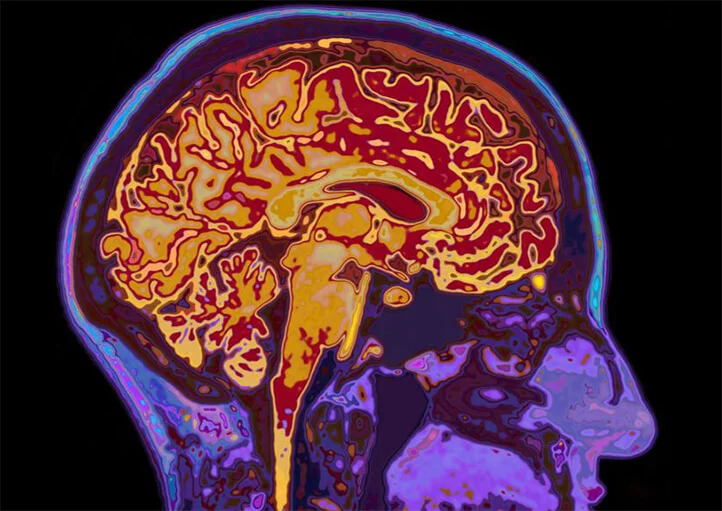
Diagnosis of PTSD
Diagnosing post-traumatic stress disorder (PTSD) is crucial for determining appropriate treatment and support. Here are some key tools and methods that are commonly used:
- Clinical Interviews:
- structured clinical interviews;
- psychiatric examinations.
- Self-Assessment Scales:
- PTSD Checklist (PCL);
- Impact of Event Scale (IES).
- Neuroimaging and Physiological Studies:
- magnetic resonance imaging (MRI);
- functional magnetic resonance imaging (fMRI).
- Psychophysiological Tests:
- tests to determine catecholamine levels in blood serum;
- galvanic skin response.
- Psychometric Tests:
- Mini-International Neuropsychiatric Interview (MINI);
- Diagnostic Interview for Genetic Studies (DIGS).
- Physical Health Examination:
- laboratory tests;
- physical health assessments.
- Identification of Comorbid Conditions:
- tools for detecting depression;
- tools for detecting anxiety disorders.
- Life History and Trauma Event Assessment:
- history-taking interviews;
- assessment of traumatic experiences.
A combination of these methods and tools is often used to ensure an accurate diagnosis.
Differential Diagnosis
Differential diagnosis is the process of identifying a specific disease by excluding other potential diseases with similar symptoms. Regarding PTSD, differential diagnosis may involve analyzing the presence of the following conditions or disorders:
- Anxiety Disorders: Some PTSD symptoms, such as heightened anxiety and vigilance, may overlap with other anxiety disorders.
- Depressive Disorders: People with PTSD often experience pessimism, loss of interest in activities they once enjoyed, and detachment, which can be common in depressive disorders.
- Acute Stress Disorder: This condition shares many similar symptoms with PTSD but differs in duration (up to 4 weeks after the traumatic event).
- Personality Disorders: Certain personality traits or behaviors may appear similar to PTSD symptoms.
- Adjustment Disorders: These may be reactions to stressful or traumatic events that do not meet the full criteria for PTSD.
- Organic Brain Disorders: The possibility of organic causes of symptoms, such as brain damage or neurological diseases, should be ruled out.
- Somatoform Disorders: These are disorders where psychological factors lead to physical symptoms that cannot be explained by a medical condition, substance use, or another mental disorder.
- Substance Use: Alcoholism or drug abuse can also cause symptoms that overlap with PTSD.
To establish an accurate diagnosis, physicians and psychotherapists use a comprehensive approach that includes clinical interviews, an assessment of the patient’s life history, and psychometric tests when necessary.
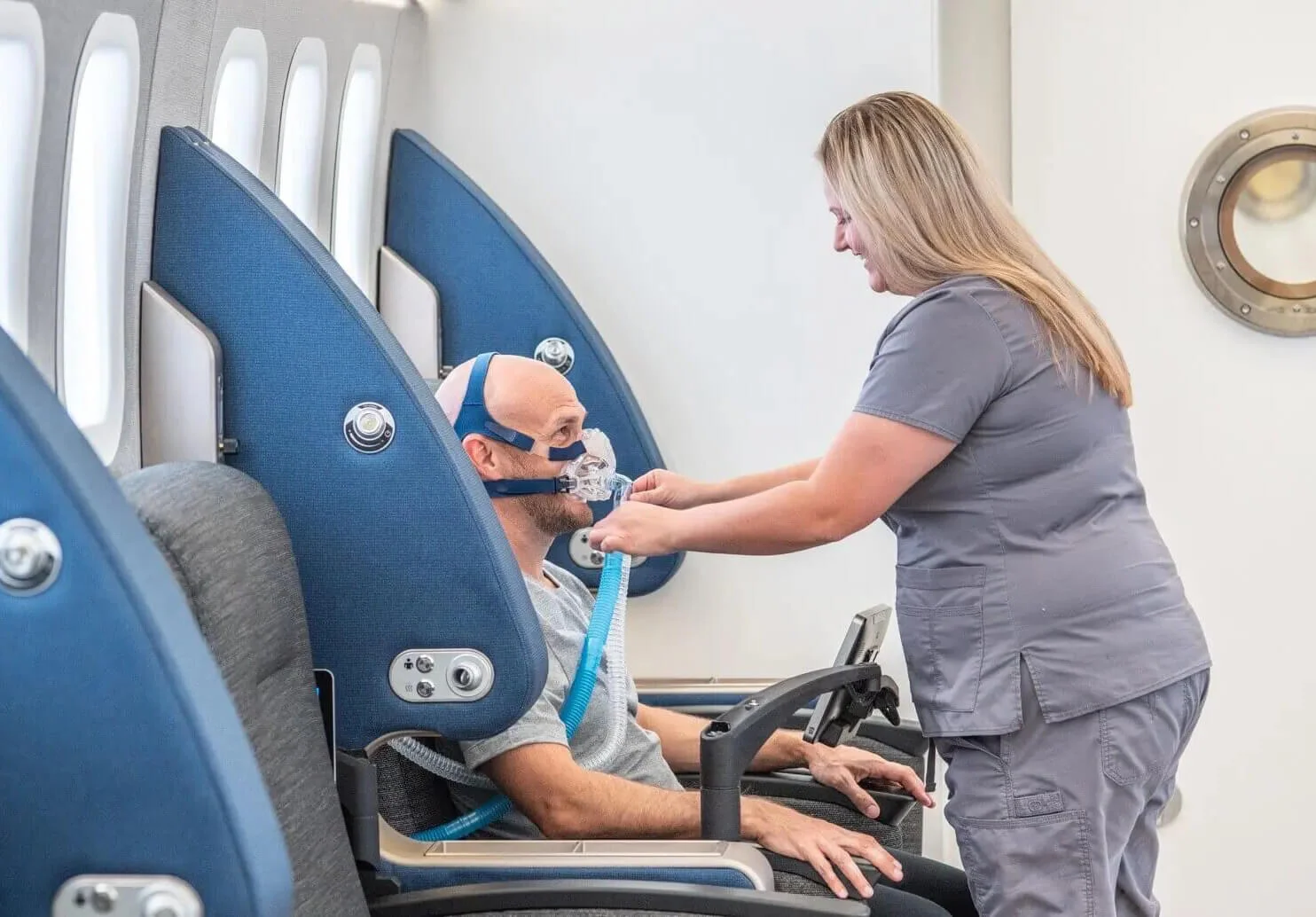
Post-Traumatic Stress Disorder: Treatment and Rehabilitation
In today’s world, where the intensity and suddenness of events can cause psychological trauma, the question of effective treatment and rehabilitation for people with PTSD becomes especially relevant. Encounters with violence, disasters, or other traumatic events often leave lasting marks on mental health that require a professional approach to recovery.
The treatment and rehabilitation of PTSD is not only an important medical task but also a social mission aimed at returning affected individuals to a full life. Psychotherapeutic methods based on evidence-based medicine help overcome the negative consequences of trauma and restore psychological balance.
Taking into account the individual characteristics of each patient, specialists develop comprehensive treatment and rehabilitation programs that include not only psychotherapy sessions but also pharmacotherapy, physiotherapy, and other methods. A targeted approach to treating PTSD allows for positive results, promoting the adaptation of affected individuals to everyday life.
The importance of family and close surroundings in the rehabilitation process should not be ignored. The support of loved ones, as well as interaction with support groups, can become a key component in restoring the mental health of a person suffering from PTSD.
Psychotherapeutic Methods
Here are some psychotherapeutic methods and approaches commonly used for the treatment and rehabilitation of individuals with PTSD:
- Cognitive-Behavioral Therapy (CBT): Aims to help patients recognize and change negative thoughts and behaviors associated with traumatic experiences.
- Exposure Therapy: Involves systematic and controlled re-exposure to the traumatic experience to reduce fear and avoidance.
- Trauma-Focused Therapy: A comprehensive approach that combines cognitive and exposure treatment methods.
- Eye Movement Desensitization and Reprocessing (EMDR): An innovative approach that uses guided eye movements to process and reframe traumatic memories.
- Humanistic and Person-Centered Therapy: Focuses on fostering personal growth and self-awareness through therapeutic interaction.
- Family Therapy: Can be helpful in restoring family relationships that have been damaged due to PTSD.
- Art Therapy: Uses creative forms of expression, such as drawing or sculpture, to help express traumatic experiences and emotions.
- Group Therapy: Allows people with PTSD to share their experiences and coping strategies with those who have experienced similar traumas.
- Meditation and Mindfulness: Can help reduce symptoms of anxiety and stress associated with post-traumatic stress disorder.
- Therapeutic Physical Activity and Yoga: Help reduce physical symptoms of stress and anxiety.
It’s important to remember that the optimal treatment plan involves a combination of different approaches and varies according to each individual’s needs.
Individual Therapy
Individual therapy is a form of psychotherapy where a therapist works one-on-one with a client. It aims to develop personal coping strategies for specific problems or psychological disorders, including PTSD. This process often combines skill-building for self-help, working through traumatic events, and managing stress reactions or traumatic memories.
Individual therapy can include various approaches and techniques, including cognitive-behavioral therapy, which helps individuals identify and change negative thought patterns and behaviors; psychodynamic therapy, focusing on exploring internal conflicts and unconscious thoughts; and teaching individuals to be more aware of their internal world and reactions to external events.
The goal of individual therapy is not only to alleviate PTSD symptoms but also to support the client in recovering from trauma, helping them process painful memories, and return to normal life.
This type of therapy is often part of a comprehensive treatment plan that may include group therapy, medication, and other forms of support.
Group Therapy
Group therapy is a form of psychotherapy where treatment is carried out in a group of patients who experience similar problems or disorders. This method helps people improve interpersonal skills, learn through shared experiences, and receive support and encouragement from group members.
Group therapy can be especially effective in treating post-traumatic stress disorder, as it helps people feel a sense of community, reduce feelings of isolation, and learn new strategies for managing symptoms.
Pharmacological Treatment of PTSD
Pharmacological treatment of PTSD involves prescribing various types of medications aimed at controlling symptoms such as anxiety, depression, or restlessness.
The main classes of medications used in the treatment of PTSD include:
- Antidepressants: Help regulate mood and reduce symptoms of anxiety.
- Anxiolytics: Useful for controlling pronounced anxiety.
- Antipsychotic drugs: Prescribed in some cases to control more severe symptoms.
It is important that pharmacological treatment is combined with psychotherapeutic methods, as this significantly increases the chances of success. Additionally, it should be emphasized that medication should be individualized and conducted under the supervision of an experienced psychiatrist.
The Role of Family and Social Support
Family often becomes the first place where a person with post-traumatic stress disorder receives support and understanding. Usually, close people help create a positive environment for recovery by providing the necessary resources.
Social support can be provided through communities specializing in helping individuals with PTSD. These can be support groups where people share their experiences and strategies for coping with symptoms. Such communities are invaluable sources of experience and empathy.
Additionally, social support can be provided by professional services offering counseling and therapy for people with post-traumatic stress disorder. These services help individuals develop strategies for overcoming challenges related to mental disorders.
Family and social support are important components of a comprehensive approach to treating and recovering from PTSD, contributing to better adaptation of the individual and improving their quality of life.
Strategies for Self-Support and Overcoming Post-Traumatic Stress Disorder
Strategies for self-support and overcoming PTSD help individuals regain control over their lives after a traumatic event. Here are some key aspects of this process:
- Awareness of PTSD: Understanding the symptoms and impact of post-traumatic stress disorder on mental well-being helps individuals create realistic self-support strategies.
- Developing Resilience Strategies: Learning relaxation skills and stress management techniques can be useful in reducing PTSD symptoms.
- Practice of Mindfulness and Meditation: Helps individuals focus on the present moment and reduce anxiety.
- Regular Physical Activity: Contributes to reducing PTSD symptoms by improving mood and health.
- Professional Help through Therapy: An effective means of working through traumatic memories and PTSD symptoms.
- Social Support: Engaging in support communities that discuss issues related to post-traumatic stress disorder helps individuals feel less isolated.
- Creating an Individual Recovery Plan: Including specific goals and strategies allows individuals to better manage their symptoms.
- Creative Activities: Art therapy and other creative pathways are useful for expressing feelings and experiences that are difficult to articulate with words.
By using these strategies, individuals can find ways to overcome PTSD and work on their recovery and well-being.
Social Support and Adaptation
Social support and adaptation are important aspects of the recovery process for individuals who have faced PTSD. People suffering from this disorder often feel isolated and detached, so it is important that they have a stable support network. Social support can come from various sources: family, friends, communities, and mental health professionals.
One key aspect of adaptation is developing self-support skills and stress management strategies that help an individual effectively adapt to new or changing life circumstances. This can include therapy, where a person learns to recognize and manage their emotional reactions, as well as developing appropriate social skills.
Additionally, specialized adaptation programs can guide individuals to find new ways of social integration, including occupational therapy, education, and involvement in volunteer activities, which help restore self-confidence and improve social relationships.
In this process, it is also important to provide information and education about PTSD to increase awareness and understanding within the community. An educated community is more sensitive and supportive, facilitating the positive social adaptation of people with PTSD.
Prevention
Individual prevention of post-traumatic stress disorder (PTSD) includes a set of measures and strategies aimed at preventing the occurrence or mitigating the symptoms of this condition after a person has experienced a traumatic event.
This may include learning self-help skills that reduce stress and enhance emotional self-control. Also, try to avoid potentially traumatic situations or dangers if possible.
An important aspect of individual prevention is the development of a personal crisis action plan that includes contacts of trusted individuals who can provide support during a difficult time.
Individual prevention can also include maintaining physical health through proper nutrition, regular physical exercise, and adequate night rest. These factors help strengthen the body’s overall resistance to stress and traumatic events.
Additionally, to understand one’s emotions and reactions to traumatic events, as well as to acquire effective stress management skills, psychoeducation will be helpful.
